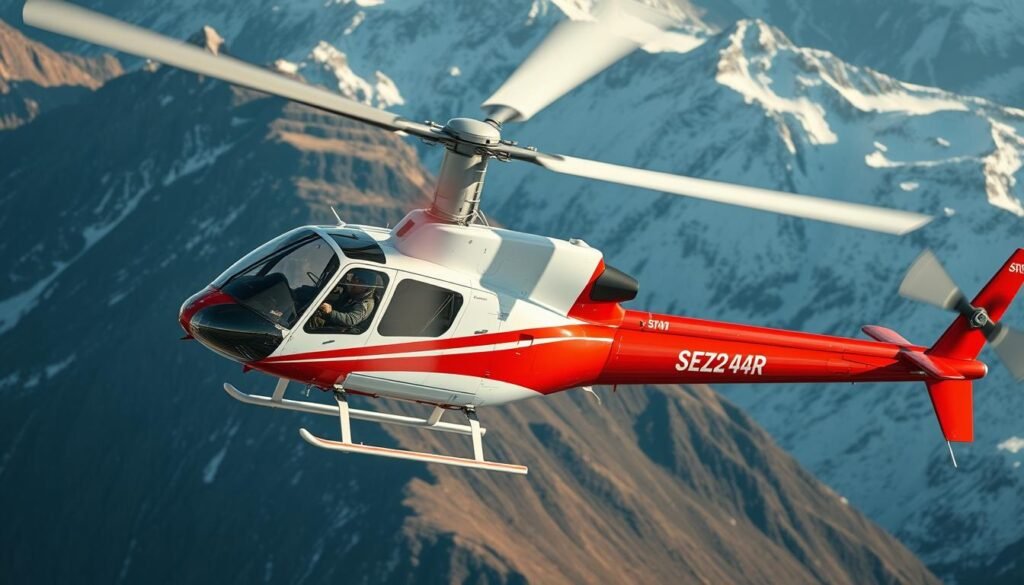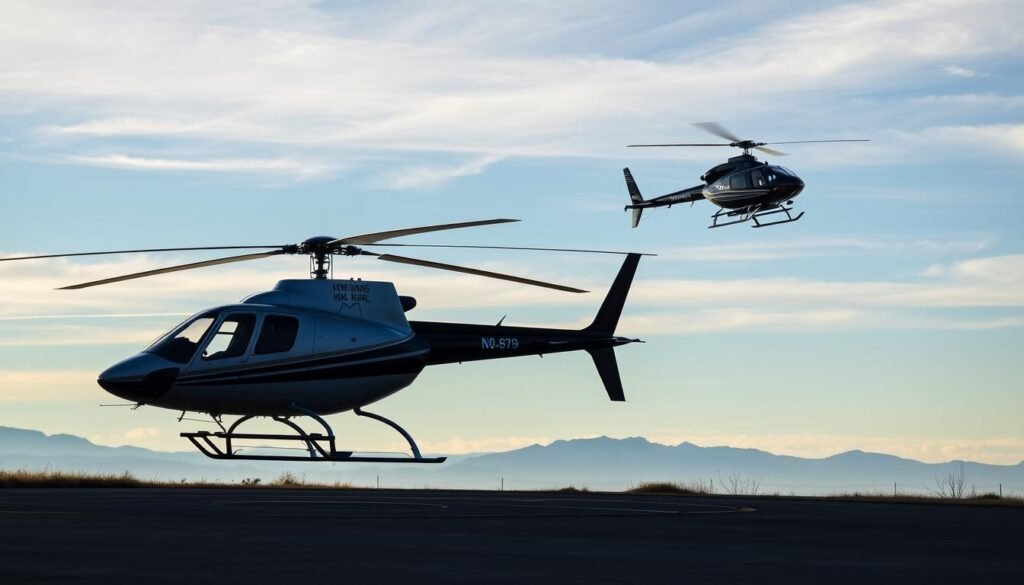This overview lays out how compensation varies across mission types, employers, and stages of a flying career in the United States.
It frames the 2025 national picture—average ranges near $89,000–$115,000, with many profiles reporting a base around $92,736 and top earners above $140,000.
The article maps role-based bands for EMS, tours, utility work, corporate/VIP, firefighting, and other sectors. It also compares hourly norms (~$30–$90) and typical monthly flight time (60–80 hours).
Readers will find practical context for evaluating offers and negotiating better terms, including how turbine time, NVG, and IFR ratings raise earning potential.
For salary benchmarks and reported averages, consult the data on reported base and ranges and a role-by-stage breakdown at career-stage salary norms.
Key Takeaways
- 2025 national averages sit near $89K–$115K; many profiles show a base about $92,736.
- Entry roles often start ~$65K; senior and specialty positions can exceed $140K.
- Role, location, and certifications (turbine, NVG, IFR) meaningfully affect compensation.
- Hourly norms range about $30–$90; compare base salary to expected monthly flight hours.
- Employer type—hospital, Part 135, private charter, government—shapes pay, benefits, and progression.
2025 Helicopter Pilot Salary Overview In The United States
In 2025, national compensation bands for rotorcraft operators cluster between roughly $89,000 and $115,000. A commonly reported base sits at $92,736, with an observed spread from about $68,000 to $133,000.
Entry-level roles often start lower. With 200–500 hours, pilots typically earn about $45,000–$60,000. Mid-tier crews (1,000–2,000 hours) usually land in the $65,000–$85,000 band. Senior crews with 2,500+ hours move into $90,000–$120,000+ ranges.
Hourly rates run from about $30 to $90 depending on mission and qualifications. Most pilots log roughly 60–80 flight hours per month, which helps translate hourly rates into annual salary when factoring duty cycles and standby time.
Many pilots teach to build hours or transition into leadership. Explore to see what CFIs earn.
| Experience Tier | Hours | Typical Annual Range |
|---|---|---|
| Entry | 200–500 | $45,000–$60,000 |
| Mid | 1,000–2,000 | $65,000–$85,000 |
| Senior / Specialist | 2,500+ | $90,000–$140,000+ |
- Benchmark: The national overview combines annual averages with a mean base of $92,736 to help hiring managers and job seekers compare offers.
- Role Effects: Offshore, VIP, and heavy-utility assignments sit at the top, while tours and instruction pay less but build hours fast.
For deeper benchmarks and reported averages, consult these resources on helicopter pilot salary benchmarks and a comprehensive breakdown at understanding the pilot helicopter salary.
Helicopter Pilot Pay Guide: Salaries By Role And Employer Type
Compensation varies widely by mission; understanding role-specific bands helps set realistic expectations.

Role and employer together define the core salary ladder. EMS, tour operations, utility work, corporate/VIP transport, and firefighting all follow distinct progression patterns. Entry, mid, and top bands reflect skill, turbine time, and risk exposure.
| Role | Entry Annual | Mid-Career Annual | Top Earner Annual |
|---|---|---|---|
| EMS | $55K–$70K | $70K–$90K | $100K+ |
| Tour | $45K–$60K | $60K–$75K | $85K+ |
| Police / Border | $60K–$85K | $85K–$105K | $120K+ |
| Corporate / VIP | $70K–$90K | $90K–$120K | $150K+ |
| Firefighting / Offshore | $65K–$85K | $85K–$110K | $130K+ |
Hourly structures mirror these bands: instructors and tours sit lower, while offshore and VIP sectors pay premium rates. Typical hourly averages range from $30–$90 depending on mission and equipment class.
- Employer Effects: Hospitals and government roles often provide steady benefits. Private charter and Part 135 operators may offer higher base or variable bonuses.
- Union Impact: Unionized operations usually give clearer progression and stronger job security. Non-union shops can be faster to negotiate raises but less structured.
- Extras: Sign-on bonuses, per diem, housing stipends, and seasonal premiums can add materially to total salary.
- Specialized Tracks: Law enforcement aviation and joint EMS services have distinct standards and often unique benefit mixes.
For detailed regional listings and employer contacts, consult salary benchmarks and a curated list of employers at top companies hiring.
Military vs. Civilian Pay: What’s the Difference?
While most helicopter pilots work in civilian roles—EMS, tour, corporate—military pilots follow a different pay structure based on rank, years of service, and federal benefits. If you’re weighing both paths, here’s a detailed comparison of what you’ll earn in each. 👉Army vs. Civilian Helicopter Pilot Salaries: What You’ll Earn in Each Path
🚁 Helicopter Pilot Pay by Employer: What Top Organizations Pay
While role and career stage shape your earnings, your employer can be just as influential. Hospital-based EMS providers, offshore operators, and government agencies each offer distinct pay structures, benefits, and advancement paths. Below are salary breakdowns for some of the most recognized helicopter employers across North America.
- Air Methods is one of the largest EMS helicopter operators in the U.S., offering competitive pay and benefits for pilots flying critical care missions.
👉 Air Methods Helicopter Pilot Salary: What to Expect from a Leading EMS Provider - Bristow Helicopters operates globally in offshore oil, gas, and charter services. Their pilots often earn premium rates for turbine time and international rotations.
👉 Bristow Helicopters Salary Breakdown: Offshore & Charter Pilot Pay - US Coast Guard pilots receive federal pay based on rank and years of service, plus housing allowances and retirement benefits.
👉 US Coast Guard Helicopter Pilot Salary: Pay, Perks, and Career Path - National Guard pilots fly stateside missions including disaster relief, medevac, and border support. Their pay blends federal military rates with state-level incentives.
👉 National Guard Helicopter Pilot Pay: What You’ll Earn Serving Stateside - Ornge is Ontario’s air ambulance provider, offering Canadian EMS pilots competitive salaries, union benefits, and turbine experience.
👉 Ornge Helicopter Pilot Salary: Canadian EMS Pay Insights
Where Helicopter Pilots Earn The Most: Regional And State Pay Trends
Regional demand and mission mix create stark differences in average compensation across U.S. states. This section maps state snapshots and explains what drives the highest pay in each market.
High-Demand Regions: Alaska, Gulf Coast, California, Texas, And New York
Alaska — $105K–$135K for utility and SAR work; hazard premiums are common for remote operations.
California — $95K–$120K fueled by VIP transport, EMS, and media lifts; cost of living pushes wages higher.
Gulf Coast / Texas — $85K–$110K (offshore transport, oil & gas); turbine time and certifications raise ceilings.
New York & Washington State — $90K–$115K for urban transport and law enforcement roles where precision matters.

Cost Of Living, Hazard Pay, And Seasonal Wildfire Impacts
Seasonal wildfire seasons in Colorado and the West create short-term spikes that lift annual totals.
Florida and Hawaii offer many jobs but lower average salary due to tourism saturation and local costs.
| State | Typical Range | Dominant Jobs |
|---|---|---|
| Alaska | $105K–$135K | Utility, SAR |
| California | $95K–$120K | VIP, EMS, News |
| Texas/Gulf | $85K–$110K | Offshore Transport, EMS |
- Signal: Remoteness and risk usually mean the highest pay.
- Strategy: Operators with turbine experience often secure top roles and stronger salary growth.
- Advice: Weigh cost-of-living and duty cycles when evaluating offers in targeted markets due demand and job density.
Credentials, Flight Hours, And Aircraft Types That Boost Salary
Credentials and aircraft experience directly shape a crew member’s annual compensation and career options. Short, focused qualifications move a candidate into higher-paying missions and leadership tracks.

ATP, NVG, IFR, Type Ratings, And HUET: Salary Impact And Typical Employers
The airline transport pilot (ATP) certificate often adds $10,000–$25,000 to base salary and opens senior roles. Night vision goggle (NVG) training commonly adds $5,000–$15,000 and is sought by emergency medical and law enforcement services.
Instrument proficiency (IFR) expands eligibility for offshore and EMS assignments. HUET is mandatory for many offshore contracts and raises total compensation through access to oil-and-gas work.
Turbine Time Thresholds And Aircraft (Bell 407, AW139, S-76, EC135)
Turbine experience typically shows value after about 500+ turbine hours. Turbine time can add $8,000–$20,000 annually.
Type ratings for high-demand machines may boost income by up to $30,000. Common high-value types include Bell 407, AW139, S-76, and EC135, all linked to complex missions and higher salary bands.
Career Ladder: Entry-Level To Chief Pilot And Director Roles
Typical progression aligns with clear compensation milestones:
| Level | Typical Roles | Annual Range |
|---|---|---|
| Entry | Tour / CFI | $55K–$75K |
| Mid | EMS, Law Enforcement, Offshore Support | $75K–$95K |
| Senior | Lead EMS, VIP Charter, Utility | $95K–$125K |
| Leadership | Chief Pilot / Director | $120K–$160K+ |
💡 Strategic Moves: Building Hours, Relocating, and Targeting High-Paying Missions
Pilots often stack roles to build flight hours quickly. Combining CFI, ferry work, seasonal tours, and utility support helps reach turbine thresholds faster. For a breakdown of what instructors earn while building hours, see 👉
Strategic relocation to hubs with offshore, EMS, or VIP charter operations improves access to higher base salary, per diem, and housing stipends. To see which roles offer the highest earnings in 2025, check 👉
For hourly, monthly, and annual breakdowns across career stages, visit 👉
For a step-by-step training roadmap that aligns credentials with earning potential, see the complete training and cost overview.
Final Thoughts
Summing up, the clearest path to higher earnings blends credentials, targeted missions, and willingness to relocate.
VIP charter, offshore and utility work often lead to the highest salaries, while leadership roles can push totals past $160,000 when bonuses and equity are included.
Those starting out should focus on EMS and law enforcement to build flight hours and safety track records. Adding airline transport and night vision goggle qualifications accelerates access to premium roles.
Evaluate total compensation — base, bonuses, per diem, housing, and seasonal premiums — and use data when negotiating. For detailed benchmarks and next steps see the salary resource.



